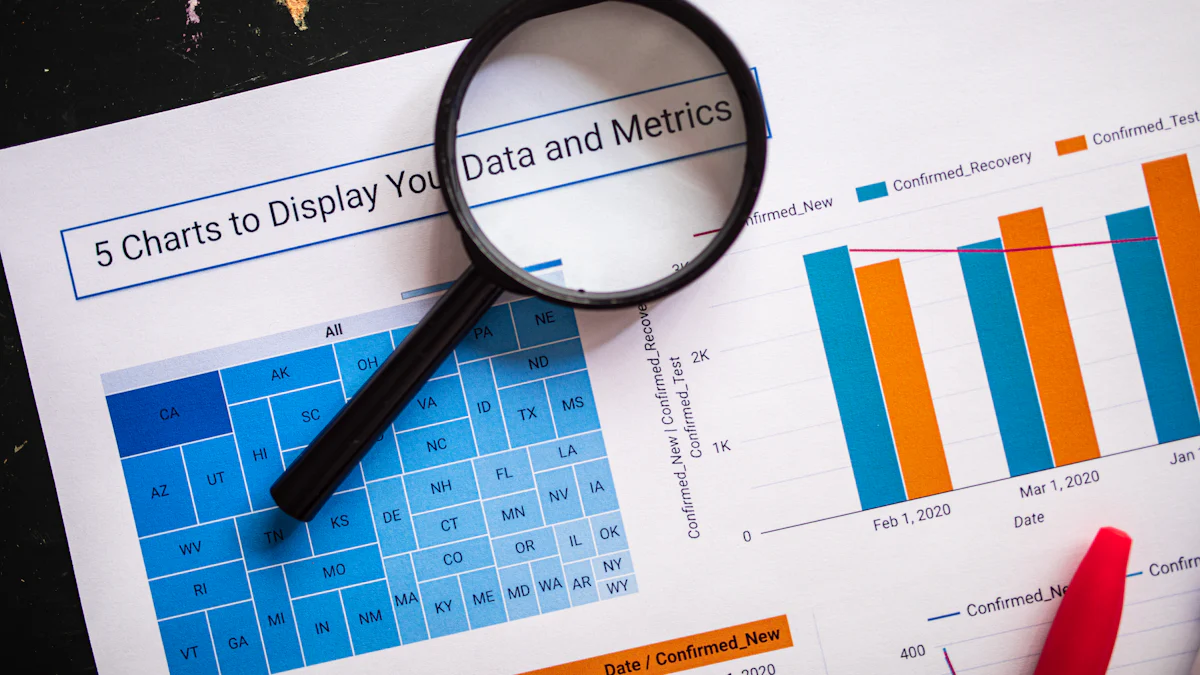Ⓒ 2023 Kyligence, Inc. All rights reserved.

Image Source: pexels
Understanding Engineering Metrics
Engineering metrics play a crucial role in evaluating and improving the performance of engineering projects. These metrics are quantitative or qualitative measurements used to assess various aspects of an engineering project, such as productivity, quality, efficiency, and safety. By implementing metrics, engineers can gain valuable insights into their projects' progress and identify areas for improvement.
The importance of using metrics in engineering projects cannot be overstated. They provide objective data that helps project managers make informed decisions, allocate resources effectively, and track project performance against set goals. Additionally, metrics enable engineers to identify bottlenecks, monitor trends, and optimize processes for better outcomes.
This comprehensive guide on engineering metrics is designed for engineers, engineering students, and project managers who seek to enhance their understanding of this essential aspect of engineering. Whether you're a seasoned professional or just starting your career in engineering, this guide will equip you with the knowledge needed to leverage data-driven insights for successful project execution.
Types of Engineering Metrics
Engineering metrics can be broadly categorized into two types: quantitative metrics and qualitative metrics. Each type serves a unique purpose in evaluating and improving engineering projects.
Quantitative Metrics
Quantitative metrics are numerical measurements that provide objective data about various aspects of an engineering project. These metrics are typically used to assess factors such as productivity, efficiency, cost, and performance. By quantifying these parameters, engineers can track progress, identify trends, and make data-driven decisions.
Examples of commonly used quantitative metrics include:
Productivity: Measuring the output or work completed within a specific timeframe.
Efficiency: Assessing the ratio of input to output in terms of resources utilized.
Cost Performance Index (CPI): Evaluating the cost efficiency by comparing actual costs to planned costs.
Schedule Performance Index (SPI): Assessing the schedule efficiency by comparing actual progress to planned progress.
Defect Density: Calculating the number of defects per unit size or effort.
Qualitative Metrics
Qualitative metrics focus on subjective evaluations and observations rather than numerical data. These metrics provide insights into factors such as user satisfaction, team collaboration, and overall project quality. While qualitative metrics may not be as easily measurable as quantitative ones, they offer valuable information that complements quantitative measurements.
Some examples of qualitative metrics include:
User Satisfaction Surveys: Gathering feedback from users to assess their satisfaction with a product or service.
Team Morale Assessments: Evaluating the overall morale and motivation levels within an engineering team.
Risk Perception Analysis: Identifying potential risks and assessing stakeholders' perception of their severity.
Peer Reviews: Conducting reviews by peers to evaluate code quality or design decisions.
By utilizing both quantitative and qualitative metrics, engineers can gain a comprehensive understanding of their projects' strengths, weaknesses, and areas for improvement. The combination of these two types of metrics provides a well-rounded assessment that helps drive informed decision-making and project success.
Implementing and Measuring Metrics
Implementing and measuring metrics effectively is crucial for obtaining meaningful insights from engineering projects. This section explores the process of selecting relevant metrics and the methods for measuring and analyzing them.
Selecting Relevant Metrics
When choosing metrics for a project, several factors should be considered. First, it's important to align the selected metrics with the project's goals and objectives. This ensures that the measurements obtained are directly related to what needs to be achieved. Additionally, considering the availability of data and resources is essential. Metrics that require extensive data collection or specialized tools may not be feasible in certain situations.
To select relevant metrics, project managers should involve key stakeholders, including engineers and clients, to identify critical success factors. These factors can then be translated into specific metrics that provide insights into those areas. It's also important to consider industry standards and best practices when selecting metrics, as they can provide benchmarks for comparison.
Measuring and Analyzing Metrics
Once relevant metrics have been identified, it's necessary to establish methods for collecting and analyzing the data. Various tools and techniques can be employed depending on the nature of the metric and available resources.
Common methods for collecting engineering metrics include surveys, automated data collection systems, manual observations, or extracting data from existing systems or databases. The collected data should then be analyzed using appropriate statistical methods or visualization techniques to derive meaningful insights.
Interpreting metrics requires a deep understanding of their context and relevance to the project goals. Project managers must look beyond raw numbers and consider trends over time, comparisons with benchmarks or targets, and correlations between different metrics. By interpreting these metrics effectively, decision-makers can identify areas requiring improvement or intervention.
By carefully selecting relevant metrics aligned with project goals and implementing robust measurement processes, engineers can gain valuable insights into their projects' performance. The analysis of these metrics empowers decision-makers to make informed choices that drive continuous improvement throughout the project lifecycle.
Summary and Key Takeaways
In summary, engineering metrics are essential tools for evaluating and improving the performance of engineering projects. They provide objective data that helps project managers make informed decisions, allocate resources effectively, and track progress towards project goals. This comprehensive guide has explored the importance of implementing metrics in engineering projects and discussed the two main types: quantitative and qualitative metrics.
When implementing and measuring metrics, it is crucial to select relevant metrics that align with project goals and objectives. Consideration should be given to factors such as data availability and feasibility. Methods for collecting and analyzing metrics vary depending on the nature of the metric and available resources.
By utilizing engineering metrics effectively, engineers can gain valuable insights into their projects' strengths, weaknesses, and areas for improvement. The benefits of utilizing metrics include improved decision-making, optimized processes, enhanced productivity, and ultimately successful project outcomes. By following the guidelines provided in this guide, engineers can harness the power of data-driven insights to drive continuous improvement in their engineering projects.
